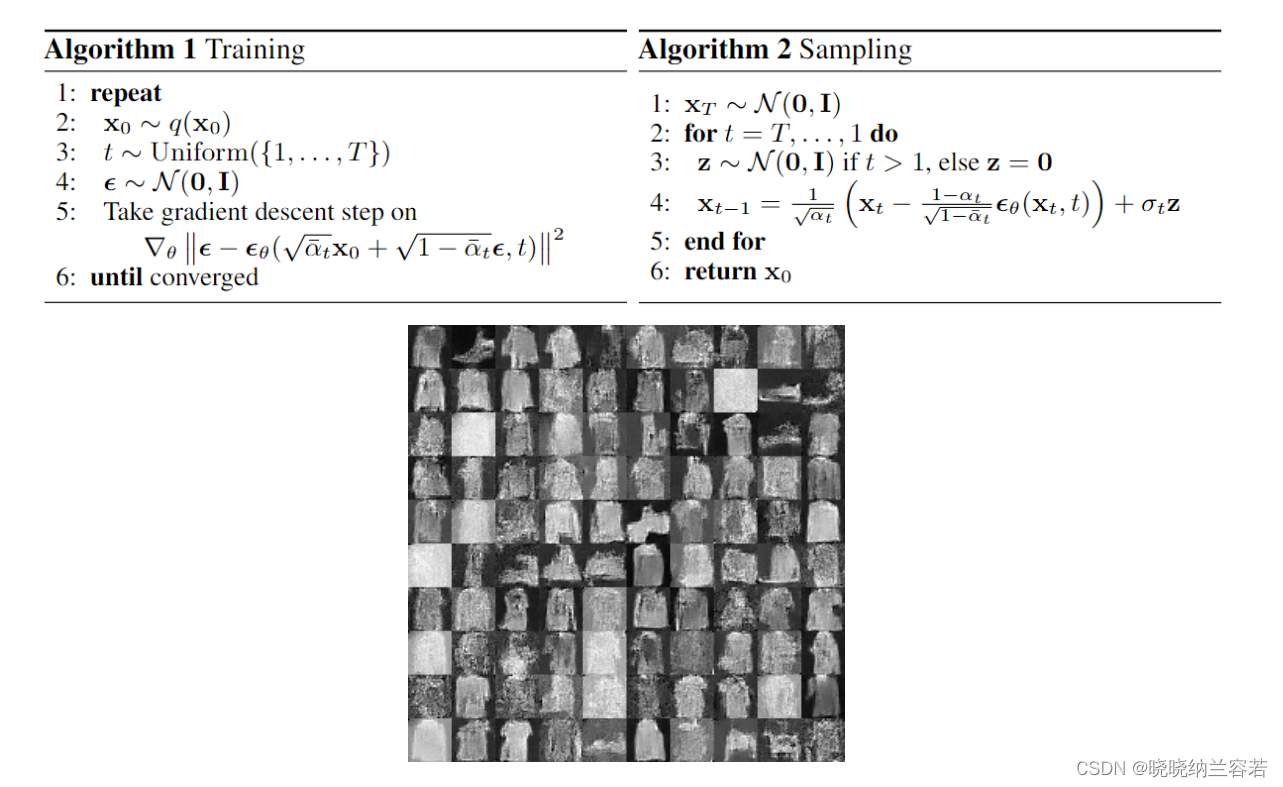目录
1--扩散模型
完整代码:ljf69/DDPM
扩散模型包含两个过程,前向扩散过程和反向生成过程。
前向扩散过程对一张图像逐渐添加高斯噪声,直至图像变为随机噪声。
反向生成过程从一个随机噪声开始,逐渐去噪声直至生成一张图像。
2--训练过程
通过以下公式对图像进行加噪:

def forward(self, x0, t, eta = None):
n, c, h, w = x0.shape # 输入图片的shape
a_bar = self.alpha_bars[t]
if eta is None:
eta = torch.randn(n, c, h, w).to(self.device)
noisy = a_bar.sqrt().reshape(n, 1, 1, 1) * x0 + (1 - a_bar).sqrt().reshape(n, 1, 1, 1) * eta # 加噪
return noisy # 返回加噪结果3--损失函数
通过一个UNet网络来预测损失,计算预测损失和真实损失MSE损失:
...
eta = torch.randn_like(x0).to(device) # 产生真实随机噪声
t = torch.randint(0, n_steps, (n,)).to(device)
# 前向扩散过程
noisy_imgs = ddpm(x0, t, eta)
# 通过UNet预测噪声
eta_theta = ddpm.backward(noisy_imgs, t.reshape(n, -1))
# 计算预测噪声和真实随机噪声的MSE损失
loss = mse(eta_theta, eta)
...4--生成过程
通过以下公式实现图片生成:

x = torch.randn(n_samples, c, h, w).to(device) # 随机初始化噪声
for idx, t in enumerate(list(range(ddpm.n_steps))[::-1]):
time_tensor = (torch.ones(n_samples, 1) * t).to(device).long()
eta_theta = ddpm.backward(x, time_tensor)
alpha_t = ddpm.alphas[t]
alpha_t_bar = ddpm.alpha_bars[t]
x = (1 / alpha_t.sqrt()) * (x - (1 - alpha_t) / (1 - alpha_t_bar).sqrt() * eta_theta) # 去噪
if t > 0:
z = torch.randn(n_samples, c, h, w).to(device)
beta_t = ddpm.betas[t]
sigma_t = beta_t.sqrt()
x = x + sigma_t * z